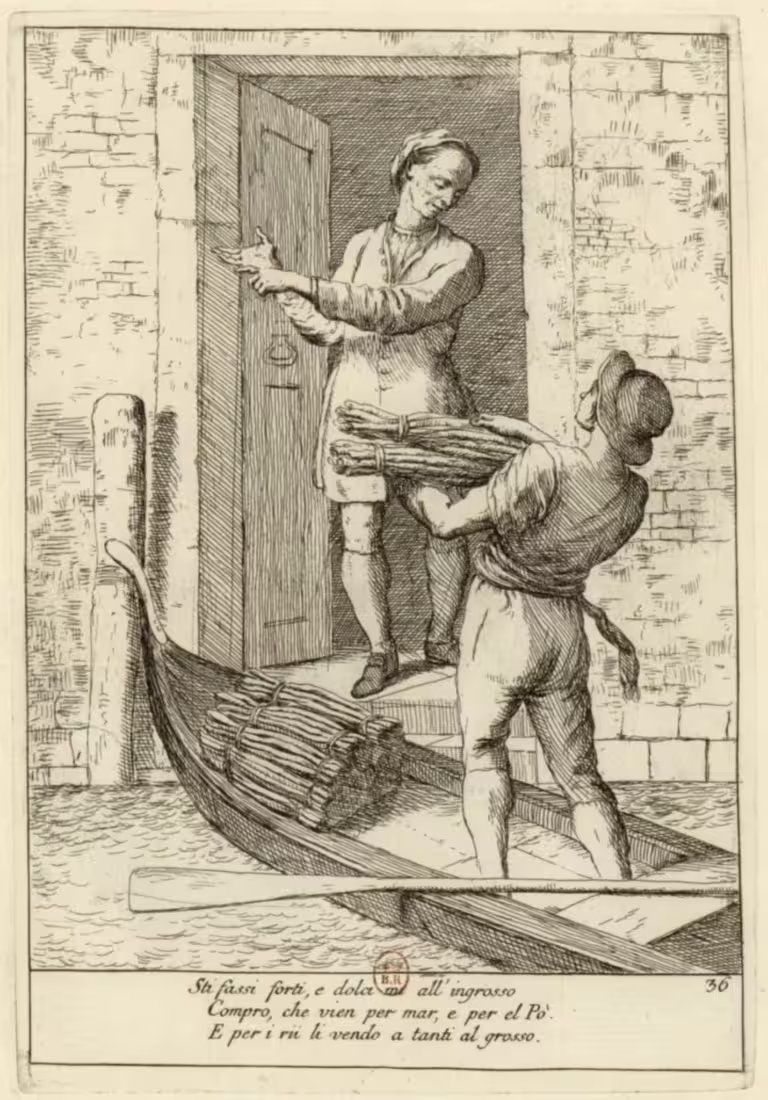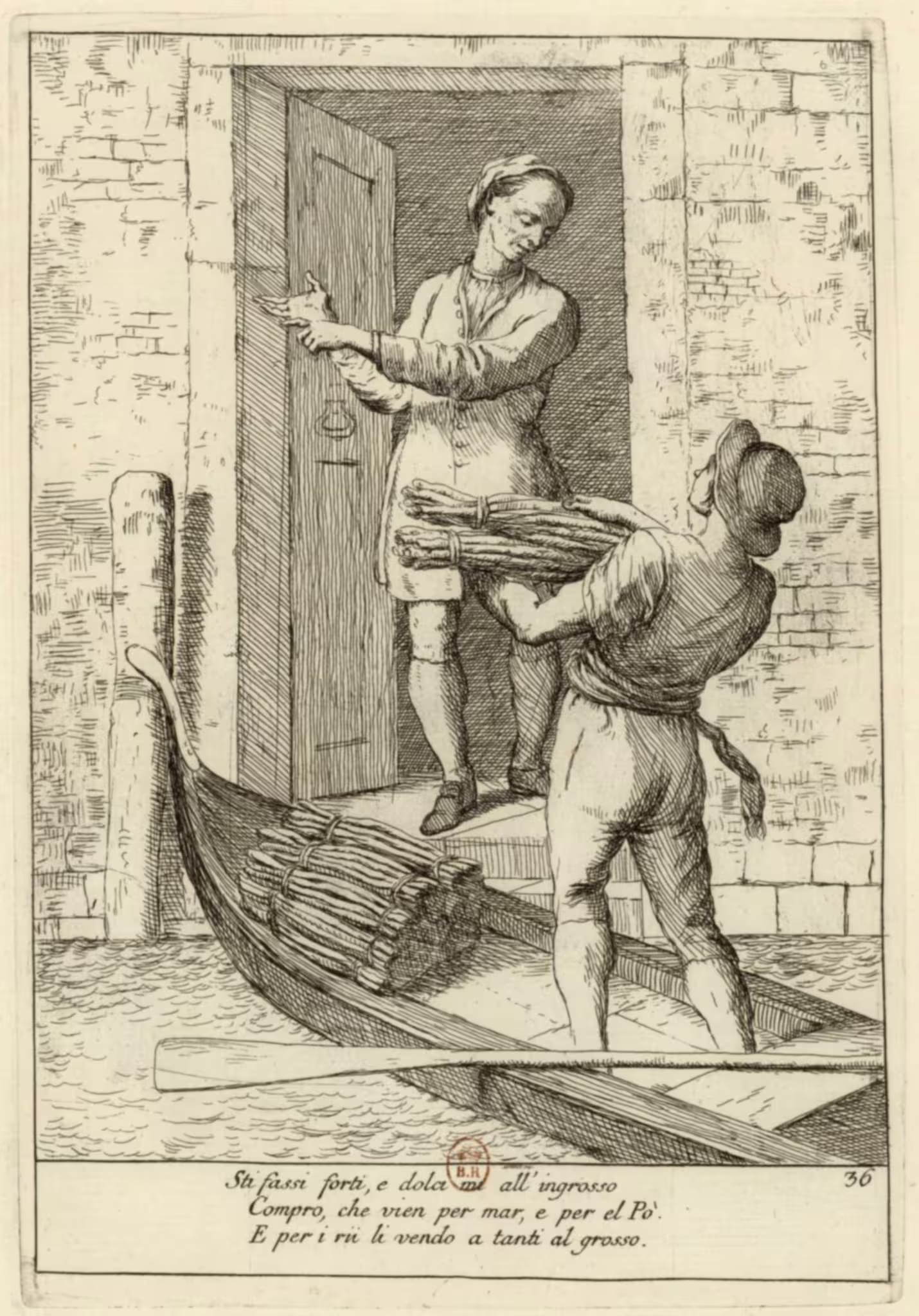Fassi per battello— plate 36
The Arti che vanno per via nella città di Venezia (1753, 1770, 1785, etc.), by Gaetano Zompini (1700–1778), contains sixty engravings of common, mostly poor people, peddling their trades on the streets of Venice in the mid-1700s.


Text
Sti fassi forti, e dolci mi all’ingrosso Compro, che vien per mar, e per el Pò. E per i rii li vendo a tanti al grosso.
Translation
These bundles sturdy and sweet, in bulk
I buy, which comes by sea, and by the Po.
And on the canals I sell them to many for a grosso.
Notes
The title literally means “Bundles by boat,” and the image shows a man in a boat selling bundles of wood to a man in a house.
My interpretation — and I don’t have anything better — is that he is selling kindling wood for the fireplaces: the twigs and smaller branches needed to start a fire, before you can add larger logs.
In this reading, the ‘sturdy’ bundles are thicker branches, and the ‘sweet’ bundles are thinner twigs. Two different qualities of kindling wood, so to say.
A grosso is a coin, but not of a denomination which would normally be used for retail trade. I think we need to give Don Questini a bit of poetic licence, however, as he likely had no other rhymes for ingrosso.
See Boerio (1829), entries FASSO and GROSSO.
All images







Leave a Reply